Egypt
« Le ciel septentrional ghr.t et le ciel mĂ©ridional gb.t »
ENiM 2, 2009, p. 53-58.
 Cette brÚve note lexicographique concerne le terme ghr.t, attesté par quelques
exemples provenant des temples gréco-romains de la région thébaine et par le P. Carlsberg I,
qui conduit à une traduction plus précise : « voûte céleste septentrionale ».
Cette brÚve note lexicographique concerne le terme ghr.t, attesté par quelques
exemples provenant des temples gréco-romains de la région thébaine et par le P. Carlsberg I,
qui conduit à une traduction plus précise : « voûte céleste septentrionale ».
 The subject of this short lexicographical note concerns the word ghr.t, attested in few
examples from the graeco-roman temples of the Theban area and in the P. Carlsberg I, which
leads to the most accurate translation âNortherly sky vaultâ.
The subject of this short lexicographical note concerns the word ghr.t, attested in few
examples from the graeco-roman temples of the Theban area and in the P. Carlsberg I, which
leads to the most accurate translation âNortherly sky vaultâ.
 Consulter cet article (59697) -
Consulter cet article (59697) -  Télécharger cet article au format pdf (31770)
Télécharger cet article au format pdf (31770)
« Domiziano, Funisulana Vettulla e la statua di Sethi I a Grottaferrata »
ENiM 2, 2009, p. 59-65.
 Ă lâAbbaye de Grottaferrata (Italie) sont visibles des fragments de reliefs Ă©gyptisants et la partie infĂ©rieure dâune statue de SĂ©thi I. Celle-ci fut apportĂ©e Ă lâĂ©poque romaine et provient du temple de RĂȘ Ă HĂ©liopolis. La publication rĂ©cente dâun catalogue des sculptures de lâAbbaye a Ă©tĂ© lâoccasion de rĂ©flĂ©chir sur le lieu d'origine et sur la signification de cette statue dans le milieu romain. Lâexistence dâune villa trĂšs importante dans les environs du chĂąteau de Borghetto, oĂč la statue a Ă©tĂ© trouvĂ©e, permet de proposer l'hypothĂšse quâelle y Ă©tait placĂ©e. Il est possible dâattribuer cette villa Ă L. Funisulanus Vettonianus, important personnage du temps de Domitien, qui Ă©tait apparentĂ© Ă Funisulana Vettulla, femme de C. Tettius Africanus, prĂ©fet dâĂgypte sous Domitien.
Ă lâAbbaye de Grottaferrata (Italie) sont visibles des fragments de reliefs Ă©gyptisants et la partie infĂ©rieure dâune statue de SĂ©thi I. Celle-ci fut apportĂ©e Ă lâĂ©poque romaine et provient du temple de RĂȘ Ă HĂ©liopolis. La publication rĂ©cente dâun catalogue des sculptures de lâAbbaye a Ă©tĂ© lâoccasion de rĂ©flĂ©chir sur le lieu d'origine et sur la signification de cette statue dans le milieu romain. Lâexistence dâune villa trĂšs importante dans les environs du chĂąteau de Borghetto, oĂč la statue a Ă©tĂ© trouvĂ©e, permet de proposer l'hypothĂšse quâelle y Ă©tait placĂ©e. Il est possible dâattribuer cette villa Ă L. Funisulanus Vettonianus, important personnage du temps de Domitien, qui Ă©tait apparentĂ© Ă Funisulana Vettulla, femme de C. Tettius Africanus, prĂ©fet dâĂgypte sous Domitien.
 Three fragments of Egyptianizing reliefs and the bottom part of a statue of Sethi I are preserved in the Abbey of Grottaferrata (Italy). A catalog has recently been published highlighting new data about how the statue from Heliopolis ended up in a Roman context. In the neighbourhood of Borghetto Castle, where the statue was found, there was an important villa, probably belonging to L. Funisulanus Vettonianus, a relative of Funisulana Vettulla, the wife of C. Tettius Africanus, Prefect of Egypt.
Three fragments of Egyptianizing reliefs and the bottom part of a statue of Sethi I are preserved in the Abbey of Grottaferrata (Italy). A catalog has recently been published highlighting new data about how the statue from Heliopolis ended up in a Roman context. In the neighbourhood of Borghetto Castle, where the statue was found, there was an important villa, probably belonging to L. Funisulanus Vettonianus, a relative of Funisulana Vettulla, the wife of C. Tettius Africanus, Prefect of Egypt.
 Consulter cet article (53857) -
Consulter cet article (53857) -  Télécharger cet article au format pdf (30367)
Télécharger cet article au format pdf (30367)
« Polybe, PtolĂ©mĂ©e IV et la tradition historiographique »
ENiM 2, 2009, p. 91-101.
 Les historiens antiques et Ă leur suite, un grand nombre d'historiens modernes, ont sĂ©vĂšrement critiquĂ© le quatriĂšme souverain de l'Ăgypte hellĂ©nistique, PtolĂ©mĂ©e Philopator, et au delĂ de la figure historique, leur jugement s'est naturellement focalisĂ© sur le bilan de son rĂšgne. Cet Ă©tat de fait tient en grande partie Ă la tradition transmise par Polybe et reprise par ses successeurs. Cependant, une remise en question de cette vision trop nĂ©gative est perceptible depuis une quarantaine dÂŽannĂ©es grĂące Ă une relecture des sources et Ă une analyse nouvelle des faits (dont certains inconnus des historiens de la premiĂšre moitiĂ© du XXe siĂšcle). Cet article propose de faire un point sur cette question.
Les historiens antiques et Ă leur suite, un grand nombre d'historiens modernes, ont sĂ©vĂšrement critiquĂ© le quatriĂšme souverain de l'Ăgypte hellĂ©nistique, PtolĂ©mĂ©e Philopator, et au delĂ de la figure historique, leur jugement s'est naturellement focalisĂ© sur le bilan de son rĂšgne. Cet Ă©tat de fait tient en grande partie Ă la tradition transmise par Polybe et reprise par ses successeurs. Cependant, une remise en question de cette vision trop nĂ©gative est perceptible depuis une quarantaine dÂŽannĂ©es grĂące Ă une relecture des sources et Ă une analyse nouvelle des faits (dont certains inconnus des historiens de la premiĂšre moitiĂ© du XXe siĂšcle). Cet article propose de faire un point sur cette question.
 The ancient historians and at their turn, a large number of modern historians have severely criticized the forth sovereign of Hellenistic Egypt, Ptolemy IV Philopator and beyond the historic figure, they based their judgment on the facts of his reign. This situation is, in large part, the result of the tradition transmitted by Polybius and taken over by his successors. Nevertheless, this very negative perspective has been looked at differently during the last forty years due to reviewing the sources and reanalyzing the facts (some of which were unknown to the historians of the first half of the 20th century). This article aims to make a point in this matter.
The ancient historians and at their turn, a large number of modern historians have severely criticized the forth sovereign of Hellenistic Egypt, Ptolemy IV Philopator and beyond the historic figure, they based their judgment on the facts of his reign. This situation is, in large part, the result of the tradition transmitted by Polybius and taken over by his successors. Nevertheless, this very negative perspective has been looked at differently during the last forty years due to reviewing the sources and reanalyzing the facts (some of which were unknown to the historians of the first half of the 20th century). This article aims to make a point in this matter.
 Consulter cet article (59837) -
Consulter cet article (59837) -  Télécharger cet article au format pdf (31547)
Télécharger cet article au format pdf (31547)
« Le cercueil de Peniou. MusĂ©e national dâHistoire naturelle de Santiago du Chili (no inv. 11.160) »
ENiM 2, 2009, p. 109-128.
 Lâanalyse du cercueil de Pȝ-n(y)-jw (XXXe dyn. â dĂ©but de lâĂ©poque ptolĂ©maĂŻque ; MusĂ©e dâhistoire naturelle de Santiago du Chili â MNHN 11.160) permet de mettre en lumiĂšre lâemploi dâune boiserie en trompe-lâĆil originale et son rapport avec diffĂ©rents motifs religieux, notamment deux figures dâAnubis anthropomorphe adoptant la posture ksw.
Lâanalyse du cercueil de Pȝ-n(y)-jw (XXXe dyn. â dĂ©but de lâĂ©poque ptolĂ©maĂŻque ; MusĂ©e dâhistoire naturelle de Santiago du Chili â MNHN 11.160) permet de mettre en lumiĂšre lâemploi dâune boiserie en trompe-lâĆil originale et son rapport avec diffĂ©rents motifs religieux, notamment deux figures dâAnubis anthropomorphe adoptant la posture ksw.
 The analysis of the Pȝ-n(y)-jwâs coffin (Dynasty 30 â Ptolemaic Period; Museo Nacional de Historia Natural, Santiago of Chile â MNHN 11.160) allows to throw a light on the use of an original woodwork in trompe lâoeil and his relationship with various religious motives, specially two anthropomorphic Anubis in the ksw posture.
The analysis of the Pȝ-n(y)-jwâs coffin (Dynasty 30 â Ptolemaic Period; Museo Nacional de Historia Natural, Santiago of Chile â MNHN 11.160) allows to throw a light on the use of an original woodwork in trompe lâoeil and his relationship with various religious motives, specially two anthropomorphic Anubis in the ksw posture.
 Consulter cet article (64442) -
Consulter cet article (64442) -  Télécharger cet article au format pdf (30677)
Télécharger cet article au format pdf (30677)
« LâĂ©tiologie de la fabrication des statuettes osiriennes au mois de Khoiak et le Rituel de lâouverture de la bouche dâaprĂšs le papyrus Jumilhac »
ENiM 5, 2012, p. 215-255.
 La lĂ©gende de la dĂ©couverte de la tĂȘte tranchĂ©e dâOsiris Ă Nedjit par Anubis et de lâouverture de sa bouche afin de lui faire divulguer les endroits oĂč il faut chercher les membres dispersĂ©s du dieu est racontĂ©e dans le papyrus Jumilhac en cinq versions plus ou moins circonstanciĂ©es. Une nouvelle comprĂ©hension de ces passages permet dây reconnaĂźtre lâĂ©tiologie de la fabrication de statuettes osiriennes en argile lors des festivitĂ©s du mois de Khoiak et Ă©claire les pratiques locales de HardaĂŻ, non mentionnĂ©es dans le long texte du « Rituel de Khoiak » Ă Dendara.
La lĂ©gende de la dĂ©couverte de la tĂȘte tranchĂ©e dâOsiris Ă Nedjit par Anubis et de lâouverture de sa bouche afin de lui faire divulguer les endroits oĂč il faut chercher les membres dispersĂ©s du dieu est racontĂ©e dans le papyrus Jumilhac en cinq versions plus ou moins circonstanciĂ©es. Une nouvelle comprĂ©hension de ces passages permet dây reconnaĂźtre lâĂ©tiologie de la fabrication de statuettes osiriennes en argile lors des festivitĂ©s du mois de Khoiak et Ă©claire les pratiques locales de HardaĂŻ, non mentionnĂ©es dans le long texte du « Rituel de Khoiak » Ă Dendara.
 Papyrus Jumilhac contains five more or less extensive versions of a myth according to which Anubis discovered the severed head of Osiris at Nedjit; the subsequent performance of an opening of the mouth enabled the head to reveal the places where the missing body parts are to be found. A corrected reading of essential phrases allows us to recognize the myth as an aetiology explaining the fabrication of Osirian clay figures during the festival of Khoiak. Furthermore, this new understanding sheds light on the local practices at Hardai which are not described in the famous Khoiak text at Dendera.
Papyrus Jumilhac contains five more or less extensive versions of a myth according to which Anubis discovered the severed head of Osiris at Nedjit; the subsequent performance of an opening of the mouth enabled the head to reveal the places where the missing body parts are to be found. A corrected reading of essential phrases allows us to recognize the myth as an aetiology explaining the fabrication of Osirian clay figures during the festival of Khoiak. Furthermore, this new understanding sheds light on the local practices at Hardai which are not described in the famous Khoiak text at Dendera.
 Consulter cet article (49219) -
Consulter cet article (49219) -  Télécharger cet article au format pdf (26032)
Télécharger cet article au format pdf (26032)
« La ThĂšbes des morts. La dynamique thĂ©baine dans les idĂ©es Ă©gyptiennes de lâau-delĂ »
ENiM 8, 2015, p. 37-66.
 Le 24 fĂ©vrier 2015 sâest tenue Ă Montpellier une table ronde rassemblant les membres du projet « La ThĂšbes des morts » inscrit dans le cadre du LabEx ArchimĂšde. Les participants ont exposĂ© le bilan dâun an de travail et, chacun dans son domaine a montrĂ© comment, au cours du Ier millĂ©naire avant J.-C., sâest manifestĂ©e la dynamique de la pensĂ©e thĂ©baine dans le domaine funĂ©raire. On trouvera ici un rĂ©sumĂ© des communications.
Le 24 fĂ©vrier 2015 sâest tenue Ă Montpellier une table ronde rassemblant les membres du projet « La ThĂšbes des morts » inscrit dans le cadre du LabEx ArchimĂšde. Les participants ont exposĂ© le bilan dâun an de travail et, chacun dans son domaine a montrĂ© comment, au cours du Ier millĂ©naire avant J.-C., sâest manifestĂ©e la dynamique de la pensĂ©e thĂ©baine dans le domaine funĂ©raire. On trouvera ici un rĂ©sumĂ© des communications.
 On February 24th 2015, in Montpellier a workshop was held gathering the members of the project âLa ThĂšbes des mortsâ as part of the LabEx ArchimĂšde. The participants have presented an overview of their work after one year, each of them, in their field, demonstrating how, during the Ist millenary B.C, the Theban way of thinking has shown in the funerary field. A summary of each of these communications can here be found .
On February 24th 2015, in Montpellier a workshop was held gathering the members of the project âLa ThĂšbes des mortsâ as part of the LabEx ArchimĂšde. The participants have presented an overview of their work after one year, each of them, in their field, demonstrating how, during the Ist millenary B.C, the Theban way of thinking has shown in the funerary field. A summary of each of these communications can here be found .
 Consulter cet article (58292) -
Consulter cet article (58292) -  Télécharger cet article au format pdf (28350)
Télécharger cet article au format pdf (28350)
« Quel souverain lagide fit don dâun gymnase Ă AthĂšnes ? »
ENiM 9, 2016, p. 65-77.
 Le gymnase Ă©tait Ă lâĂ©poque hellĂ©nistique un vĂ©ritable symbole de la culture grecque et reprĂ©sentait le mode de vie hellĂšne par excellence. Or, un souverain lagide fonda Ă AthĂšnes â citĂ© de culture entre toutes et qui disposait dĂ©jĂ notamment des gymnases du LycĂ©e et de lâAcadĂ©mie â un nouvel Ă©difice Ă une date qui reste indĂ©terminĂ©e et dont la localisation nâest pas aisĂ©e. Cet article propose de retracer le contexte politique de la citĂ© athĂ©nienne au IIIe siĂšcle afin de tenter dâidentifier quel fut le PtolĂ©mĂ©e bienfaiteur de la citĂ©.
Le gymnase Ă©tait Ă lâĂ©poque hellĂ©nistique un vĂ©ritable symbole de la culture grecque et reprĂ©sentait le mode de vie hellĂšne par excellence. Or, un souverain lagide fonda Ă AthĂšnes â citĂ© de culture entre toutes et qui disposait dĂ©jĂ notamment des gymnases du LycĂ©e et de lâAcadĂ©mie â un nouvel Ă©difice Ă une date qui reste indĂ©terminĂ©e et dont la localisation nâest pas aisĂ©e. Cet article propose de retracer le contexte politique de la citĂ© athĂ©nienne au IIIe siĂšcle afin de tenter dâidentifier quel fut le PtolĂ©mĂ©e bienfaiteur de la citĂ©.
 The gymnasium was in the Hellenistic period a symbol of Greek culture and represented the Hellenic way of life. Interestingly, a Ptolemaic sovereign founded in Athens â the most cultural famous city and which already had gymnasiums like The Lyceum and the Academy â a new building at a date still unknown and whose location is not easy. This article aims to retrace the political context of the Athenian city in the third century in an attempt to identify who was the Ptolemyâs benefactor of the city.
The gymnasium was in the Hellenistic period a symbol of Greek culture and represented the Hellenic way of life. Interestingly, a Ptolemaic sovereign founded in Athens â the most cultural famous city and which already had gymnasiums like The Lyceum and the Academy â a new building at a date still unknown and whose location is not easy. This article aims to retrace the political context of the Athenian city in the third century in an attempt to identify who was the Ptolemyâs benefactor of the city.
 Consulter cet article (50116) -
Consulter cet article (50116) -  Télécharger cet article au format pdf (27824)
Télécharger cet article au format pdf (27824)
« A Survey of the Military Role of the Sherden Warriors in the Egyptian Army during the Ramesside Period »
ENiM 10, 2017, p. 7-23.
 Les Chardanes faisaient partie des Peuples de la mer qui attaquĂšrent lâĂgypte pendant la pĂ©riode ramesside. Les pillards chardanes Ă©taient des ennemis de lâĂgypte au dĂ©but du rĂšgne de RamsĂšs II, qui proclama sa victoire sur eux. AprĂšs leur dĂ©faite, beaucoup dâentre eux furent capturĂ©s et intĂ©grĂ©s dans lâarmĂ©e Ă©gyptienne, devenant lâune des meilleures troupes dâauxiliaires Ă©trangers. Ils furent employĂ©s par les Ăgyptiens pendant toute la pĂ©riode ramesside. Ils servirent comme unitĂ©s dâinfanterie ou comme gardes du corps du roi. Les cĂ©lĂšbres reliefs dĂ©crivant la bataille de Qadech et la bataille de Dapour au temps de RamsĂšs II, la guerre libyenne de MĂ©renptah, ou les guerres libyennes et du nord de RamsĂšs III, mentionnent la prĂ©sence significative des unitĂ©s chardanes dans lâarmĂ©e Ă©gyptienne. Cet article examine et discute le rĂŽle des guerriers chardanes dans lâarmĂ©e Ă©gyptienne pendant la pĂ©riode ramesside.
Les Chardanes faisaient partie des Peuples de la mer qui attaquĂšrent lâĂgypte pendant la pĂ©riode ramesside. Les pillards chardanes Ă©taient des ennemis de lâĂgypte au dĂ©but du rĂšgne de RamsĂšs II, qui proclama sa victoire sur eux. AprĂšs leur dĂ©faite, beaucoup dâentre eux furent capturĂ©s et intĂ©grĂ©s dans lâarmĂ©e Ă©gyptienne, devenant lâune des meilleures troupes dâauxiliaires Ă©trangers. Ils furent employĂ©s par les Ăgyptiens pendant toute la pĂ©riode ramesside. Ils servirent comme unitĂ©s dâinfanterie ou comme gardes du corps du roi. Les cĂ©lĂšbres reliefs dĂ©crivant la bataille de Qadech et la bataille de Dapour au temps de RamsĂšs II, la guerre libyenne de MĂ©renptah, ou les guerres libyennes et du nord de RamsĂšs III, mentionnent la prĂ©sence significative des unitĂ©s chardanes dans lâarmĂ©e Ă©gyptienne. Cet article examine et discute le rĂŽle des guerriers chardanes dans lâarmĂ©e Ă©gyptienne pendant la pĂ©riode ramesside.
 The Sherden were a part of Sea Peoples who attacked Egypt during the Ramesside period. The Sherden raiders were enemies of Egypt at the beginning of the reign of Ramesses II, who proclaimed its victory on them. After their defeat, many of them were captured and integrated into the Egyptian army, becoming one of the best troops of foreign auxiliaries. They were used by Egyptians during all the Ramesside period. They served as units of infantry or as bodyguards of the king. The famous reliefs describing the battle of Qadech and the battle of Dapour in the time of Ramesses II, the Libyan war of Merenptah, and the Libyan and northern wars of Ramesses III, refer to the significant presence of the Sherden units in the Egyptian army. This paper surveys and discusses the military role of Sherden warriors in the Egyptian army during the Ramesside period.
The Sherden were a part of Sea Peoples who attacked Egypt during the Ramesside period. The Sherden raiders were enemies of Egypt at the beginning of the reign of Ramesses II, who proclaimed its victory on them. After their defeat, many of them were captured and integrated into the Egyptian army, becoming one of the best troops of foreign auxiliaries. They were used by Egyptians during all the Ramesside period. They served as units of infantry or as bodyguards of the king. The famous reliefs describing the battle of Qadech and the battle of Dapour in the time of Ramesses II, the Libyan war of Merenptah, and the Libyan and northern wars of Ramesses III, refer to the significant presence of the Sherden units in the Egyptian army. This paper surveys and discusses the military role of Sherden warriors in the Egyptian army during the Ramesside period.
 Consulter cet article (62341) -
Consulter cet article (62341) -  Télécharger cet article au format pdf (27298)
Télécharger cet article au format pdf (27298)
« Historical Observations on the Military Role of Three Ramesside Viceroys of Kush »
ENiM 11, 2018, p. 33-40.
 Le Vice-roi de Koush (Fils royal de Koush) Ă©tait un haut fonctionnaire de lâadministration impĂ©riale Ă©gyptienne durant le Nouvel Empire. Les sources textuelles et archĂ©ologiques de la pĂ©riode ramesside indiquent que certains vice-rois ramessides ont jouĂ© un rĂŽle militaire important durant les rĂšgnes de SĂ©thy Ier, RamsĂšs II et MĂ©renptah, en maintenant lâautoritĂ© politique, Ă©conomique et militaire de lâEmpire ramesside dans ses territoires mĂ©ridionaux. Ils participĂšrent aux grandes campagnes militaires ramessides contre la Nubie sous le commandement de leurs rois guerriers afin dâanĂ©antir les rĂ©voltes nubiennes dans les rĂ©gions dâIrem ou de Ouaouat. Ils menĂšrent Ă©galement dâautres campagnes par eux-mĂȘmes dans le mĂȘme but ainsi quâĂ des fins politiques ou Ă©conomiques. Cet article examine et discute ce point afin de mettre en lumiĂšre un nouvel aspect de lâimpĂ©rialisme Ă©gyptien en Nubie ramesside.
Le Vice-roi de Koush (Fils royal de Koush) Ă©tait un haut fonctionnaire de lâadministration impĂ©riale Ă©gyptienne durant le Nouvel Empire. Les sources textuelles et archĂ©ologiques de la pĂ©riode ramesside indiquent que certains vice-rois ramessides ont jouĂ© un rĂŽle militaire important durant les rĂšgnes de SĂ©thy Ier, RamsĂšs II et MĂ©renptah, en maintenant lâautoritĂ© politique, Ă©conomique et militaire de lâEmpire ramesside dans ses territoires mĂ©ridionaux. Ils participĂšrent aux grandes campagnes militaires ramessides contre la Nubie sous le commandement de leurs rois guerriers afin dâanĂ©antir les rĂ©voltes nubiennes dans les rĂ©gions dâIrem ou de Ouaouat. Ils menĂšrent Ă©galement dâautres campagnes par eux-mĂȘmes dans le mĂȘme but ainsi quâĂ des fins politiques ou Ă©conomiques. Cet article examine et discute ce point afin de mettre en lumiĂšre un nouvel aspect de lâimpĂ©rialisme Ă©gyptien en Nubie ramesside.
 The Viceroy of Kush (Kingâs son of Kush) was a high official in the structure of the Egyptian imperial administration during the New Kingdom. The textual and archaeological evidence of the Ramesside Period indicate that some Ramesside viceroys had played a significant military role during the reigns of Sety I, Ramesses II and Merenptah, to support the political, economic and military authority of the Ramesside Empire in its southern territories. They had participated in the major Ramesside military campaigns against Nubia under the command of their warrior kings that aimed to crush any Nubian revolts in the regions of Irem or Wawat. They had also led other campaigns by themselves for the same purpose and for any other political or economic purposes. This paper surveys and discusses this point, in order to shed some light on a new aspect of the Egyptian imperialism in Ramesside Nubia.
The Viceroy of Kush (Kingâs son of Kush) was a high official in the structure of the Egyptian imperial administration during the New Kingdom. The textual and archaeological evidence of the Ramesside Period indicate that some Ramesside viceroys had played a significant military role during the reigns of Sety I, Ramesses II and Merenptah, to support the political, economic and military authority of the Ramesside Empire in its southern territories. They had participated in the major Ramesside military campaigns against Nubia under the command of their warrior kings that aimed to crush any Nubian revolts in the regions of Irem or Wawat. They had also led other campaigns by themselves for the same purpose and for any other political or economic purposes. This paper surveys and discusses this point, in order to shed some light on a new aspect of the Egyptian imperialism in Ramesside Nubia.
 Consulter cet article (45881) -
Consulter cet article (45881) -  Télécharger cet article au format pdf (25860)
Télécharger cet article au format pdf (25860)
« Analyse stylistique de quelques scĂšnes du temple dâEsna »
ENiM 11, 2018, p. 171-182.
 Le temple dâEsna est un Ă©difice dĂ©corĂ© sous les pĂ©riodes ptolĂ©maĂŻques et romaines. Sa particularitĂ© majeure est dâĂȘtre inachevĂ©Â : seule la salle hypostyle a Ă©tĂ© bĂątie. Les concepteurs du temple ont donc adaptĂ© la rĂ©partition des images de façon Ă ce que sa symbolique fonctionne comme dans un Ă©difice complet. Esna est Ă©galement un tĂ©moignage du style grĂ©co-romain avec ses colonnes puissantes, ses chapiteaux lotiformes, son architecture puissante⊠Il comprend des scĂšnes rĂ©currentes Ă cette Ă©poque et dâautres plus rares. Lâune dâentre elle prĂ©sente une des rares figurations dâimpĂ©ratrice romaine en Ăgypte : Julia Domna, Ă©pouse de Septime SĂ©vĂšre. Lâanalyse de cet Ă©difice prouve que lâart Ă©gyptien dâĂ©poque romaine nâest pas gratuit mais pensĂ©, prĂ©cis et adaptĂ©.
Le temple dâEsna est un Ă©difice dĂ©corĂ© sous les pĂ©riodes ptolĂ©maĂŻques et romaines. Sa particularitĂ© majeure est dâĂȘtre inachevĂ©Â : seule la salle hypostyle a Ă©tĂ© bĂątie. Les concepteurs du temple ont donc adaptĂ© la rĂ©partition des images de façon Ă ce que sa symbolique fonctionne comme dans un Ă©difice complet. Esna est Ă©galement un tĂ©moignage du style grĂ©co-romain avec ses colonnes puissantes, ses chapiteaux lotiformes, son architecture puissante⊠Il comprend des scĂšnes rĂ©currentes Ă cette Ă©poque et dâautres plus rares. Lâune dâentre elle prĂ©sente une des rares figurations dâimpĂ©ratrice romaine en Ăgypte : Julia Domna, Ă©pouse de Septime SĂ©vĂšre. Lâanalyse de cet Ă©difice prouve que lâart Ă©gyptien dâĂ©poque romaine nâest pas gratuit mais pensĂ©, prĂ©cis et adaptĂ©.
 The temple of Esna is a building decorated under Ptolemaic and Roman periods. Its major peculiarity is to be unfinished. Indeed, it includes only an hypostyle room. The designers of the temple thus adapted the distribution of the images so as to its symbolism works as in a complete building. Esna is also a testimony of the Graeco-Roman style with its powerful columns, its lotiform capitals, its strong architecture⊠It includes recurring scenes at that time and others rarer. The one of its presents one of the rare representations of a Roman empress in Egypt: Julia Domna, wife of Septimus Severus. The analysis of this building proves that the Egyptian art of Roman time is not free but thought, precise and adapted to the situation and politic.
The temple of Esna is a building decorated under Ptolemaic and Roman periods. Its major peculiarity is to be unfinished. Indeed, it includes only an hypostyle room. The designers of the temple thus adapted the distribution of the images so as to its symbolism works as in a complete building. Esna is also a testimony of the Graeco-Roman style with its powerful columns, its lotiform capitals, its strong architecture⊠It includes recurring scenes at that time and others rarer. The one of its presents one of the rare representations of a Roman empress in Egypt: Julia Domna, wife of Septimus Severus. The analysis of this building proves that the Egyptian art of Roman time is not free but thought, precise and adapted to the situation and politic.
 Consulter cet article (41229) -
Consulter cet article (41229) -  Télécharger cet article au format pdf (24506)
Télécharger cet article au format pdf (24506)
« The Canaanite and Nubian Wars of Merenptah: Some Historical Notes »
ENiM 13, 2020, p. 133-149.
 MĂ©renptah (1213-1203 av. n. Ăš.) fit preuve dâune intense activitĂ© militaire au Canaan et en Nubie, qui eut une importante influence sur lâhistoire de ces rĂ©gions au Nouvel Empire en Ăgypte et Ă lâĂge du Bronze final au Proche-Orient. Les guerres asiatiques et nubiennes de ce souverain ont permis de rĂ©affirmer lâinfluence de lâĂgypte au Levant et en Nubie, effaçant les traces des importantes rĂ©bellions ayant eu lieu dans ces territoires de lâempire Ă©gyptien. Cet article analyse les perspectives historiques de ces guerres afin de mettre en lumiĂšre de nouveaux aspects de la politique militaire conduite par lâempire ramesside.
MĂ©renptah (1213-1203 av. n. Ăš.) fit preuve dâune intense activitĂ© militaire au Canaan et en Nubie, qui eut une importante influence sur lâhistoire de ces rĂ©gions au Nouvel Empire en Ăgypte et Ă lâĂge du Bronze final au Proche-Orient. Les guerres asiatiques et nubiennes de ce souverain ont permis de rĂ©affirmer lâinfluence de lâĂgypte au Levant et en Nubie, effaçant les traces des importantes rĂ©bellions ayant eu lieu dans ces territoires de lâempire Ă©gyptien. Cet article analyse les perspectives historiques de ces guerres afin de mettre en lumiĂšre de nouveaux aspects de la politique militaire conduite par lâempire ramesside.
 The Egyptian military activity in Canaan and Nubia was very significant during the reign of Merenptah (1213â1203 BC) and was an important part of the historical developments during the New Kingdom of Egypt as well as in the contemporary Late Bronze Age of the Ancient Near East. The Canaanite and Nubian wars of Merenptah reestablished Egyptâs influence in the Levant and Nubia after the massive rebellions that occurred in the territories of the Egyptian empire. This paper surveys and discusses some significant historical notes and perspectives on the Canaanite and Nubian wars of Merenptah, in order to shed some light on new military and political aspects of the Ramesside Empire.
The Egyptian military activity in Canaan and Nubia was very significant during the reign of Merenptah (1213â1203 BC) and was an important part of the historical developments during the New Kingdom of Egypt as well as in the contemporary Late Bronze Age of the Ancient Near East. The Canaanite and Nubian wars of Merenptah reestablished Egyptâs influence in the Levant and Nubia after the massive rebellions that occurred in the territories of the Egyptian empire. This paper surveys and discusses some significant historical notes and perspectives on the Canaanite and Nubian wars of Merenptah, in order to shed some light on new military and political aspects of the Ramesside Empire.
 Consulter cet article (47662) -
Consulter cet article (47662) -  Télécharger cet article au format pdf (23109)
Télécharger cet article au format pdf (23109)
« A lion in a lettuce? Some ideas on a group of late Old Kingdom maceheads »
ENiM 13, 2020, p. 263-273.
 Cet article Ă©tudie les tĂȘtes de massues avec ce que lâon dĂ©crit habituellement comme un « dĂ©cor de losanges Ă©voquant un vĂ©gĂ©tal », dĂ©couvertes dans le complexe mortuaire du roi Teti Ă Saqqara (dĂ©but de la 6e dynastie). Compte tenu de divers Ă©lĂ©ments de preuve, un tel motif rappellerait plutĂŽt la criniĂšre dâun lion et/ou la touffe de sa queue au lieu de reprĂ©senter un vĂ©gĂ©tal.
Cet article Ă©tudie les tĂȘtes de massues avec ce que lâon dĂ©crit habituellement comme un « dĂ©cor de losanges Ă©voquant un vĂ©gĂ©tal », dĂ©couvertes dans le complexe mortuaire du roi Teti Ă Saqqara (dĂ©but de la 6e dynastie). Compte tenu de divers Ă©lĂ©ments de preuve, un tel motif rappellerait plutĂŽt la criniĂšre dâun lion et/ou la touffe de sa queue au lieu de reprĂ©senter un vĂ©gĂ©tal.
 This article studies some maceheads with a hard-tipped leaf scale motif discovered in the mortuary complex of king Teti at Saqqara (early 6th dynasty). Considering several pieces of evidence, such pattern would recall the lionâs mane and/or tuft of its tail instead of depicting some kind of vegetable, according to previous interpretations.
This article studies some maceheads with a hard-tipped leaf scale motif discovered in the mortuary complex of king Teti at Saqqara (early 6th dynasty). Considering several pieces of evidence, such pattern would recall the lionâs mane and/or tuft of its tail instead of depicting some kind of vegetable, according to previous interpretations.
 Consulter cet article (44209) -
Consulter cet article (44209) -  Télécharger cet article au format pdf (23726)
Télécharger cet article au format pdf (23726)
« La voĂ»te en briques crues dans le contexte funĂ©raire nubien »
ENiM 13, 2020, p. 275-283.
 La voĂ»te dite « nubienne » : une structure architecturale que lâon retrouve dĂšs les premiĂšres dynasties Ă©gyptiennes. En Nubie ce type de construction est essentiellement rĂ©alisĂ© en briques crues et il semble que les reprĂ©sentants du Groupe C (2400-1450 avant notre Ăšre) en Basse-Nubie se soient familiarisĂ©s avec la maçonnerie en briques crues au dĂ©but du Moyen Empire. En parallĂšle en Haute Nubie, la nĂ©cropole de Kerma (2450-1500 avant notre Ăšre) comporte de nombreuses constructions voĂ»tĂ©es en briques crues. Alors quâen Ăgypte lâarchitecture voĂ»tĂ©e en briques crues se dĂ©veloppe en contexte funĂ©raire, en Nubie elle est utilisĂ©e dans le domaine funĂ©raire, cultuel mais aussi civil. Cet article retrace lâapparition et le dĂ©veloppement de la voĂ»te nubienne sur le territoire nubien dans le domaine funĂ©raire.
La voĂ»te dite « nubienne » : une structure architecturale que lâon retrouve dĂšs les premiĂšres dynasties Ă©gyptiennes. En Nubie ce type de construction est essentiellement rĂ©alisĂ© en briques crues et il semble que les reprĂ©sentants du Groupe C (2400-1450 avant notre Ăšre) en Basse-Nubie se soient familiarisĂ©s avec la maçonnerie en briques crues au dĂ©but du Moyen Empire. En parallĂšle en Haute Nubie, la nĂ©cropole de Kerma (2450-1500 avant notre Ăšre) comporte de nombreuses constructions voĂ»tĂ©es en briques crues. Alors quâen Ăgypte lâarchitecture voĂ»tĂ©e en briques crues se dĂ©veloppe en contexte funĂ©raire, en Nubie elle est utilisĂ©e dans le domaine funĂ©raire, cultuel mais aussi civil. Cet article retrace lâapparition et le dĂ©veloppement de la voĂ»te nubienne sur le territoire nubien dans le domaine funĂ©raire.
 The so-called âNubian vaultâ: an architectural structure that can be found since the firth Egyptian dynasties. In Nubia this type of construction is mainly made in mud bricks and it seems that population of the C-Groupe (2400-1450 BC) in Lower Nubia became familiar with mud brick architecture at the beginning of the Middle Kingdom. In the same time, in Upper Nubia, the Kerma necropolis (2450-1500 BC) have numerus vaulted building in mud bricks. While in Egypt vaulted mud brick architecture developed in funerary context, in Nubia et was used together in funerary, cult and civilian. This paper traces the appearance and development of the Nubian vault in Nubia in the funeral context.
The so-called âNubian vaultâ: an architectural structure that can be found since the firth Egyptian dynasties. In Nubia this type of construction is mainly made in mud bricks and it seems that population of the C-Groupe (2400-1450 BC) in Lower Nubia became familiar with mud brick architecture at the beginning of the Middle Kingdom. In the same time, in Upper Nubia, the Kerma necropolis (2450-1500 BC) have numerus vaulted building in mud bricks. While in Egypt vaulted mud brick architecture developed in funerary context, in Nubia et was used together in funerary, cult and civilian. This paper traces the appearance and development of the Nubian vault in Nubia in the funeral context.
 Consulter cet article (43162) -
Consulter cet article (43162) -  Télécharger cet article au format pdf (22761)
Télécharger cet article au format pdf (22761)
« âCâest une multitude de navires-kftjw quâil a faits pour moi...â. Sur lâĂ©gyptianitĂ© du bateau de type crĂ©tois »
ENiM 14, 2021, p. 75-89.
 « Câest une multitude de navires-kftjw quâil a faits pour moi⊠». Sur lâĂ©gyptianitĂ© du bateau de type crĂ©tois. Au sein du vocabulaire Ă©gyptien relatif au monde Ă©gĂ©en, le bateau kftjw (i.e. « de type crĂ©tois » = BTC) est mentionnĂ© Ă trois reprises dans la documentation, sous les rĂšgnes de Thoutmosis III et celui de son fils et successeur, Amenhotep II. NĂ©anmoins, leur signification est aujourdâhui toujours lâobjet de dĂ©bats. DâaprĂšs les travaux antĂ©rieurs des Ă©gyptologues et Ă©gĂ©anistes, elle pourrait dĂ©signer soit la destination du voyage, soit lâorigine de la construction et/ou un port dâattache. La relecture de la documentation textuelle permet de dĂ©montrer que ces navires sont construits Ă lâĂ©gyptienne, en Ăgypte, par et pour des Ăgyptiens.
« Câest une multitude de navires-kftjw quâil a faits pour moi⊠». Sur lâĂ©gyptianitĂ© du bateau de type crĂ©tois. Au sein du vocabulaire Ă©gyptien relatif au monde Ă©gĂ©en, le bateau kftjw (i.e. « de type crĂ©tois » = BTC) est mentionnĂ© Ă trois reprises dans la documentation, sous les rĂšgnes de Thoutmosis III et celui de son fils et successeur, Amenhotep II. NĂ©anmoins, leur signification est aujourdâhui toujours lâobjet de dĂ©bats. DâaprĂšs les travaux antĂ©rieurs des Ă©gyptologues et Ă©gĂ©anistes, elle pourrait dĂ©signer soit la destination du voyage, soit lâorigine de la construction et/ou un port dâattache. La relecture de la documentation textuelle permet de dĂ©montrer que ces navires sont construits Ă lâĂ©gyptienne, en Ăgypte, par et pour des Ăgyptiens.
 âItâs a multitude of Kftjw-ships that he made for meâŠâ. On the Egyptianity of the Cretan type boat. Within the Egyptian vocabulary related to the Aegean world, the kftjw boat (i.e. âCretan typeâ = CTB) is mentioned three times in the documentation during the reigns of Thutmose III and that of his son and successor, Amenhotep II. Nevertheless, its meaning remains controversial. Earlier Egyptologists and Aegeanists scholars interpreted the term either as an indication of the shipâs destination, the origin of its construction or its home port. A reassessment of the textual documentation, however, demonstrates that these ships were built in Egypt, in the Egyptian way, by and for Egyptians.
âItâs a multitude of Kftjw-ships that he made for meâŠâ. On the Egyptianity of the Cretan type boat. Within the Egyptian vocabulary related to the Aegean world, the kftjw boat (i.e. âCretan typeâ = CTB) is mentioned three times in the documentation during the reigns of Thutmose III and that of his son and successor, Amenhotep II. Nevertheless, its meaning remains controversial. Earlier Egyptologists and Aegeanists scholars interpreted the term either as an indication of the shipâs destination, the origin of its construction or its home port. A reassessment of the textual documentation, however, demonstrates that these ships were built in Egypt, in the Egyptian way, by and for Egyptians.
 Consulter cet article (48432) -
Consulter cet article (48432) -  Télécharger cet article au format pdf (22065)
Télécharger cet article au format pdf (22065)
« Les mĂąts des navires de lâĂgypte pharaonique »
ENiM 16, 2023, p. 75-104.
 Cet article dĂ©crit les types de mĂąt que lâon trouve dans les navires de lâĂgypte ancienne de lâAncien au Nouvel Empire, quâil sâagisse du mĂąt simple, bipode ou tripode. Il met ensuite en lumiĂšre la maniĂšre dont Ă©taient constituĂ©s les sommets de ces mĂąts. Enfin, sont examinĂ©s les diffĂ©rents types dâemplantures dans lesquels Ă©taient logĂ©s les pieds de mĂąts.
Cet article dĂ©crit les types de mĂąt que lâon trouve dans les navires de lâĂgypte ancienne de lâAncien au Nouvel Empire, quâil sâagisse du mĂąt simple, bipode ou tripode. Il met ensuite en lumiĂšre la maniĂšre dont Ă©taient constituĂ©s les sommets de ces mĂąts. Enfin, sont examinĂ©s les diffĂ©rents types dâemplantures dans lesquels Ă©taient logĂ©s les pieds de mĂąts.
 This article describes the types of mast found in Ancient Egyptian ships from the Old Kingdom to the New Kingdom, whether single, bipod or tripod. It then looks at how the head of these masts were made. Finally, it examines the different types of mast supports in which the heel of the mast were housed.
This article describes the types of mast found in Ancient Egyptian ships from the Old Kingdom to the New Kingdom, whether single, bipod or tripod. It then looks at how the head of these masts were made. Finally, it examines the different types of mast supports in which the heel of the mast were housed.
 Consulter cet article (32177) -
Consulter cet article (32177) -  Télécharger cet article au format pdf (14171)
Télécharger cet article au format pdf (14171)
« Crocodiles sauvages / crocodiles apprivoisĂ©s dans lâĂgypte de lâĂ©poque tardive. Croyances rĂ©gionales et interdits »
ENiM 17, 2024, p. 1-44.
 Cette enquĂȘte Ă nouveaux frais aborde, sous un Ă©clairage anthropozoologique, le paradoxe relatif au comportement polarisĂ© des Ăgyptiens vis-Ă -vis des crocodiles sauvages et des crocodiles apprivoisĂ©s. Ces diffĂ©rences dâattitudes ne reposent pas sur une opposition entre les deux espĂšces indistinctement rĂ©parties dans toute lâĂ©tendue de la basse vallĂ©e du Nil â Crocodylus niloticus LAURENTI, 1768 et Crocodylus suchus HEKKALA et al., 2011 â, mĂȘme si une pression de la premiĂšre espĂšce sâest exercĂ©e sur la seconde, laquelle reprĂ©sente lâessentiel des momies de crocodiles. Le portrait de la situation que dressent diffĂ©rents auteurs (HĂ©rodote, Diodore de Sicile, Strabon, Ălien, Philon dâAlexandrie), sans tenir compte des deux espĂšces attestĂ©es, est corroborĂ© non seulement par lâĂ©tude de la documentation archĂ©ologique Ă©gyptienne, mais aussi par deux approches anthropologiques dans deux contrĂ©es diffĂ©rentes dont les habitants partagent des territoires avec Crocodylus niloticus LAURENTI, 1768. En Afrique de lâouest, en particulier au Mali, chez les Dogons, qui opposent crocodiles inoffensifs ou sacrĂ©s et dangereux ou « ordinaires » avec des consĂ©quences sur le quotidien des habitants ; Ă Madagascar, oĂč les situations rĂ©gionales, fortement contrastĂ©es, font apparaĂźtre un culte aux ancĂȘtres, des aspects judiciaires (ordalies), des vengeances divines. La comparaison de la situation Ă©gyptienne avec celles de lâouest africain et de Madagascar permet de mieux cerner les diffĂ©rences de comportements des riverains de la vallĂ©e du Nil selon que leurs crocodiles y sont honnis et massacrĂ©s (Tentyris = Dendara, Apollinopolis = Edfou, ĂlĂ©phantine) ou sacrĂ©s et vĂ©nĂ©rĂ©s (Maâabda = Samoun, Ombos = KĂŽm Ombo, Antaeoplis-Qaou el-QĂ©bir, ChĂ©nosbokion, Coptos, Crocodilopolis-Soumenou = Gebelein, lac MoĂ©ris, ArsinoĂ©-Crocodilopolis), mettant en relief des croyances et des interdits rĂ©gionaux.
Cette enquĂȘte Ă nouveaux frais aborde, sous un Ă©clairage anthropozoologique, le paradoxe relatif au comportement polarisĂ© des Ăgyptiens vis-Ă -vis des crocodiles sauvages et des crocodiles apprivoisĂ©s. Ces diffĂ©rences dâattitudes ne reposent pas sur une opposition entre les deux espĂšces indistinctement rĂ©parties dans toute lâĂ©tendue de la basse vallĂ©e du Nil â Crocodylus niloticus LAURENTI, 1768 et Crocodylus suchus HEKKALA et al., 2011 â, mĂȘme si une pression de la premiĂšre espĂšce sâest exercĂ©e sur la seconde, laquelle reprĂ©sente lâessentiel des momies de crocodiles. Le portrait de la situation que dressent diffĂ©rents auteurs (HĂ©rodote, Diodore de Sicile, Strabon, Ălien, Philon dâAlexandrie), sans tenir compte des deux espĂšces attestĂ©es, est corroborĂ© non seulement par lâĂ©tude de la documentation archĂ©ologique Ă©gyptienne, mais aussi par deux approches anthropologiques dans deux contrĂ©es diffĂ©rentes dont les habitants partagent des territoires avec Crocodylus niloticus LAURENTI, 1768. En Afrique de lâouest, en particulier au Mali, chez les Dogons, qui opposent crocodiles inoffensifs ou sacrĂ©s et dangereux ou « ordinaires » avec des consĂ©quences sur le quotidien des habitants ; Ă Madagascar, oĂč les situations rĂ©gionales, fortement contrastĂ©es, font apparaĂźtre un culte aux ancĂȘtres, des aspects judiciaires (ordalies), des vengeances divines. La comparaison de la situation Ă©gyptienne avec celles de lâouest africain et de Madagascar permet de mieux cerner les diffĂ©rences de comportements des riverains de la vallĂ©e du Nil selon que leurs crocodiles y sont honnis et massacrĂ©s (Tentyris = Dendara, Apollinopolis = Edfou, ĂlĂ©phantine) ou sacrĂ©s et vĂ©nĂ©rĂ©s (Maâabda = Samoun, Ombos = KĂŽm Ombo, Antaeoplis-Qaou el-QĂ©bir, ChĂ©nosbokion, Coptos, Crocodilopolis-Soumenou = Gebelein, lac MoĂ©ris, ArsinoĂ©-Crocodilopolis), mettant en relief des croyances et des interdits rĂ©gionaux.
 This fresh investigation takes an anthropozoological look at the paradox of Egyptians' polarized behavior towards wild and tame crocodiles. These differences in attitude are not based on an opposition between the two species indiscriminately distributed throughout the lower Nile valleyâCrocodylus niloticus LAURENTI, 1768 and Crocodylus suchus HEKKALA et al., 2011âeven though the former exerted pressure on the latter, which accounted for the bulk of crocodile mummies. The picture painted by various authors (Herodotus, Diodorus Siculus, Strabo, Elian, Philo of Alexandria), regardless of the two attested species, is corroborated not only by the study of Egyptian archaeological documentation, but also by two anthropological approaches in two different regions whose inhabitants share territories with Crocodylus niloticus LAURENTI, 1768. In West Africa, particularly in Mali, among the Dogons, who contrast harmless or sacred crocodiles with dangerous or âordinaryâ crocodiles, with consequences for the daily lives of the inhabitants; in Madagascar, where regional situations are highly contrasted, revealing ancestor worship, judicial aspects (ordalies) and divine vengeance. A comparison of the Egyptian situation with those of West Africa and Madagascar provides a clearer picture of the differences in the behavior of people living along the Nile Valley, depending on whether their crocodiles are reviled and massacred (Tentyris = Dendara, Apollinopolis = Edfou, Elephantine) or sacred and venerated (Maâabda = Samun, Ombos = Kom Ombo, Antaeoplis-Qaou el-Qebir, Chenosbokion, Coptos, Crocodilopolis-Sumenu = Gebelein, Moeris lake, Arsinoe-Crocodilopolis), highlighting regional beliefs and bans.
This fresh investigation takes an anthropozoological look at the paradox of Egyptians' polarized behavior towards wild and tame crocodiles. These differences in attitude are not based on an opposition between the two species indiscriminately distributed throughout the lower Nile valleyâCrocodylus niloticus LAURENTI, 1768 and Crocodylus suchus HEKKALA et al., 2011âeven though the former exerted pressure on the latter, which accounted for the bulk of crocodile mummies. The picture painted by various authors (Herodotus, Diodorus Siculus, Strabo, Elian, Philo of Alexandria), regardless of the two attested species, is corroborated not only by the study of Egyptian archaeological documentation, but also by two anthropological approaches in two different regions whose inhabitants share territories with Crocodylus niloticus LAURENTI, 1768. In West Africa, particularly in Mali, among the Dogons, who contrast harmless or sacred crocodiles with dangerous or âordinaryâ crocodiles, with consequences for the daily lives of the inhabitants; in Madagascar, where regional situations are highly contrasted, revealing ancestor worship, judicial aspects (ordalies) and divine vengeance. A comparison of the Egyptian situation with those of West Africa and Madagascar provides a clearer picture of the differences in the behavior of people living along the Nile Valley, depending on whether their crocodiles are reviled and massacred (Tentyris = Dendara, Apollinopolis = Edfou, Elephantine) or sacred and venerated (Maâabda = Samun, Ombos = Kom Ombo, Antaeoplis-Qaou el-Qebir, Chenosbokion, Coptos, Crocodilopolis-Sumenu = Gebelein, Moeris lake, Arsinoe-Crocodilopolis), highlighting regional beliefs and bans.
 Consulter cet article (34564) -
Consulter cet article (34564) -  Télécharger cet article au format pdf (12253)
Télécharger cet article au format pdf (12253)
ENiM 18 - 2025
8 article(s) - 8 octobre 2025.
ENiM 1 à 18 (2008-2025) : 227 articles
5 292 686 téléchargements
10 560 561 consulations.
Index des auteurs

Mots clés

Derniers articles : 
CENiM - Mise en ligne des volumes Ă©puisĂ©s : 
 Anne-Sophie von BOMHARD DĂ©cans Ă©gyptiens, CENiM 23, Montpellier, 2020 — (2020)
Anne-Sophie von BOMHARD DĂ©cans Ă©gyptiens, CENiM 23, Montpellier, 2020 — (2020) 
 Jean-Claude Grenier L'Osiris ANTINOOS, CENiM 1, Montpellier, 2008 — (26 dĂ©cembre 2008)
Jean-Claude Grenier L'Osiris ANTINOOS, CENiM 1, Montpellier, 2008 — (26 dĂ©cembre 2008) 
TDENiM - Mise en ligne des volumes Ă©puisĂ©s : 
 Twitter
Twitter 4208008 visites - 9549 visite(s) aujourd’hui - 51 connecté(s)
© ENiM - Une revue d’égyptologie sur internet
Équipe Égypte Nilotique et Méditerranéenne - UMR 5140 - « Archéologie des Sociétés Méditerranéennes » (Cnrs) - Université Paul Valéry - Montpellier III
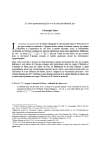
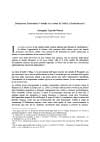
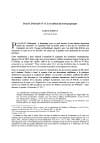
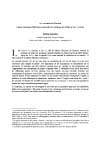

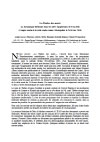
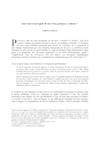
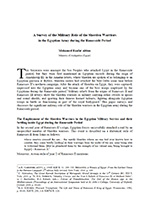
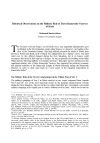
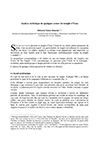
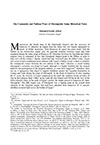
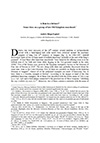
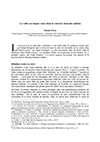
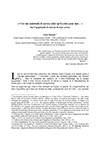
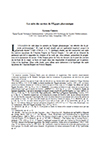
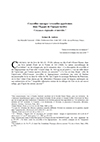





















 Contact
Contact
 Abonnez-vous !
Abonnez-vous ! Équipe Égypte Nilotique et Méditerranéenne
Équipe Égypte Nilotique et Méditerranéenne UMR 5140 « Archéologie des Sociétés Méditerranéennes » (Cnrs)
UMR 5140 « Archéologie des Sociétés Méditerranéennes » (Cnrs) Université Paul Valéry - Montpellier III
Université Paul Valéry - Montpellier III